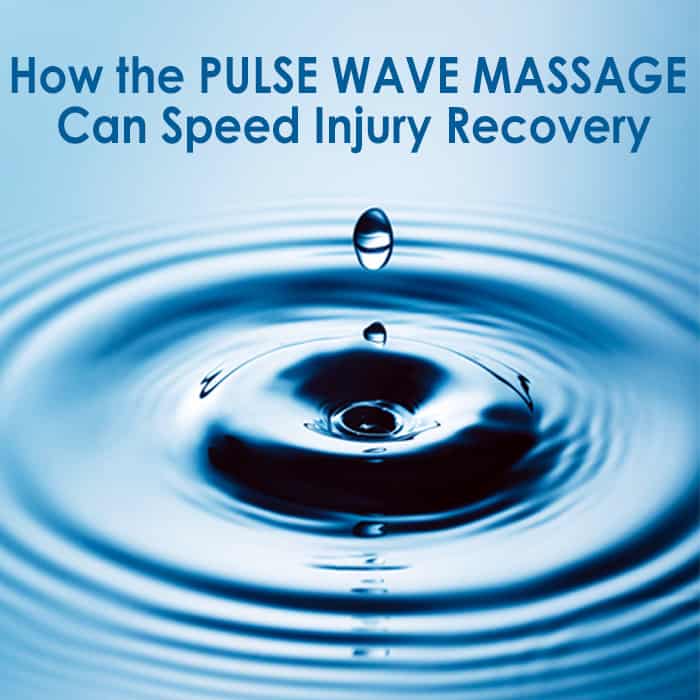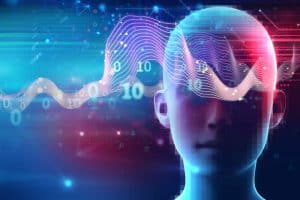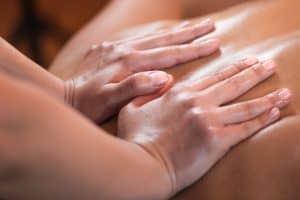

Having played both collegiate basketball and tennis, and coming from a family deeply involved in professional athletics (my brother was a pro basketball player, my father – pro baseball, my father-in-law – pro soccer), I have experienced and seen the havoc professional athletics can inflict on the sportsman’s body and have a keen understanding of every aspect of the recovery process.
I wish that there had been a massage in existence like the Pulse Wave Massage during my recovery periods. I know that if there had been, I would have demanded it be a part of my rehabilitation to:
- shorten my recovery time
- ease my pain
- and help me become a stronger and healthier athlete by the end of my recuperation.
What is the Pulse Wave Massage?
The Pulse Wave Massage began as an outside the box approach to treating the injuries of fellow professional dancers while I was a Broadway/International touring actor. Professional dancers are every inch an athlete and their injuries include all the pulls and tears so prevalent in the sports arena.
In the beginning, my technique focused on working with the nervous system to allow for greater ROM and deeper levels of pain relief and relaxation. I achieve this by utilizing floating and rocking of the limbs which releases tension in all of the muscles activating a joint allowing for more space in the joint and greater ROM and flexibility. For example, if a client feels that their leg is floating away from their body, all of the attachments crossing the hip area must release in order for this sensation to occur.
The “How to Coordinate a Deep Massage into an Athlete’s Schedule” Conundrum

When a dance injury side-lined me from the stage for a bit – I decided to take a break from my acting to attend massage school and learn more about the art. As a part of this training we were required to attend a three-day seminar on how to incorporate the various traditional deep massages into a professional athlete’s training and performance schedule.
Why did we need to be taught this? The reason lies in the fact that many traditional deep techniques damage the tissue – much like a strength building workout tears muscle to build muscle. This damage often requires days or longer for the tissue to recover. Therefore, we had to learn how to incorporate recovery time into the massages to make sure the athlete’s performance did not suffer. As an athlete who had already massaged hundreds of professionals without needing to inflict pain or damage tissue, this did not make sense.
This seminar was one of the main motivators for me to find a better way to do deep tissue work when I left school. My experimentation with deep massage following graduation focused on incorporating what I knew of massage technique prior to attending school into the positive aspects found in the techniques I had learned at school without including the numerous contraindications and negative side effects found in traditional deep massage such as bruising, compromising the circulatory system, and pain.
What I developed was the Pulse Wave technique. The basic premise of this massage is to use pulsating pressure in place of held pressure or deep fiber friction, and to approach depths with the intent of bringing pleasure to the tissue instead of pain. In creating this new approach to deep tissue massage, I achieved profound depths without pain/contraindications/damage to either the client or myself.
But it was not until my research into how massage can impact Delta Wave brain wave activity (the brain wave activity during which almost every aspect of our healing process exclusively occurs or is exponentially amplified) that I fully appreciated the incredible healing potential of the Pulse Wave Massage for injury recovery, and the damaging aspects of traditional techniques.
To understand the enormous implications of what this means to professional athletes and those recovering from injury, we must look at the profound healing that takes place during delta.
The Wonders of Delta
 Our brain activity is categorized into several different stages based upon the wave frequency of each stage. The slowest and longest frequency is called Delta.
Our brain activity is categorized into several different stages based upon the wave frequency of each stage. The slowest and longest frequency is called Delta.
For the most part, people reach the delta stage or brain activity during sleep – and only 15% of our sleep on average is spent in this Delta state (often referred to as “deep sleep”).
Research clearly shows that it is during the Delta state of brain activity that nearly all of the human growth hormone is produced; most of the protein, interleukin-1, a key component in our immune system‘s defense is created; the production of tumor necrosis factor, a potent killer of cancerous cells, increases ten-fold; and memory consolidation and nervous system regeneration mainly occurs.
Reaching Delta
Slowing one’s brain activity down to the delta level IS POSSIBLE outside of being asleep. The main reason that we are unable to reach this state of relaxation in the waking world (and during sleep for that matter) is that our defensive mechanisms do not allow us to disengage our awareness of our surroundings. This shutting down of our defenses to allow us to ignore our surroundings must happen to achieve Delta.
What this Means for Injury Recovery
Traditional deep massages that utilize pain as a tool never reach delta as they constantly trigger a person’s defensive reflex. However, the Pulse Wave Massage allows for deep work that actually penetrates deeper than traditional techniques without triggering the defensive reflex. This is profound for athletes and those recovering from injury as it allows for the healing aspects of delta wave relaxation during deep work. What is more – it facilitates reaching delta sleep faster and more soundly that night.
Imagine the healing impact increased delta activity will have on growth hormone production (the building block for all cellular repair), energy restoration, immune system strengthening, memory building, and more! Many studies indicate that just 30 minutes more of the healing components produced while in delta three times a week can reduce a three-month recovery period by almost two weeks!
Other Advantages of the Pulse Wave Massage
Greater depths

A pulse wave penetrates deeper than held pressure as it continues into the tissue far beyond the last point of therapist contact – often throughout the entire body. Again, the force wave initiated by the therapist’s hands does not stop at the point of contact. So even a mild pulse sends pressure waves deeper than the depth of finger penetration into the tissue – deeper than achievable with painful held pressure.
Think of a tub filled with water. If you push your hands up and down in a system of water, the pulse waves travel outward in all directions and then rebound off harder surfaces to inundate all the areas with waves after wave of gentle pressure. And once you remove your hands the waves continue to slosh back and forth for a long time afterwards. I can attest that many of my clients say they still feel “my hands massaging them” and their tissue warming and softening hours after they have had their massage.
But it is not just the muscle tissue that is receiving the positive health benefits from the pulse waves traveling back and forth through the tissue. The organs are being gently massaged by waves of force. The spinal fluid – which is very hard to get moving around to nourish and rejuvenate the nervous system – is feeling the ripples of the pulse waves, causing the fluid in our spine and cranium to move about. In fact, all bodily systems are benefiting from the gentle waves of pressure moving through them.
Reduces stress levels and enhances pain management
Elevated stress levels associated with pain and fear release harmful substances into our system that is unhealthy in many ways – from raising the heart rate, to increasing blood pressure, to suppressing the immune system, to making it more difficult to sleep at night – thus reducing Delta activity which further suppresses the immune system, damages the emotional system, and significantly lowers the production of nearly every healing component needed by the body to regenerate and grow.
The Pulse Wave does not trigger this stress response because it does not create a pattern of fear triggering the body’s defensive response which is to release these ultimately harmful substances. On the contrary, the trust inducing pulse reduces cortisol levels, lowers blood pressure, helps with sleep patterns, and allows for the possibility of achieving the Delta Wave threshold and all the healing benefits associated with this state of relaxation.
Furthermore, the pleasurable feelings engendered by the pulses/waves reinforced by the signals transmitted through our touch of our intent to bring pleasure to the area causes the release of pain-relieving endorphins.
Collateral tissue relaxation
When using deep techniques that employ even low to moderate pain thresholds, the tension that accumulates in the surrounding tissue builds with each occurrence of pain.
By utilizing the Pulse Wave technique, not only is the collateral tension eliminated, but there is also a beneficial collateral massaging effect to the surrounding tissue as the waves of force travel far beyond the pulsating point of pressure. What is more – by bringing pleasure to an area instead of pain, the adjoining areas of the body soften in anticipation of also experiencing the pleasure.
Increased blood flow
Traditional deep techniques cause a dangerous buildup of pressure in the return system and tourniquet-like deprivation of blood supply to the point of pressure and the tissue beyond, but with the Pulse Wave there is an increase in blood supply brought to the area being worked and a beneficial “aid” to the return system – especially the lymphatic, which relies so heavily on the pump action in the muscles.
And Don’t forget the increased ROM!
I had mentioned earlier in the article that this massage was developed in part by working on professional dancers and helping them maintain and often increase their range of motion as they recovered. This facet of the Pulse Wave Massage should not be understated. An athlete’s range of motion does not just suffer because of an injury – but strength building often restricts ROM. It is vitally important that the massage they receive aids in maintaining and even improving their flexibility and range of motion.
A Part of Every Recovery Therapy
As I mentioned at the start of this article, I have experienced the punishment an athlete’s body goes through in training and competing. Also, I have experienced the traditional deep massage therapies and have endured the pain and fear that was a part of those therapies, believing that the angst was something I just had to suck up and go through in order to get back in the game – not realizing that I was possibly hindering my recovery and performance in receiving the traditional deep work.
I wish that I had known then what I now know – and what I hope this article has revealed: that there is a better way.
If there is a remedy that reduces pain, increases the production of cell regeneration materials, boosts the immune system, and facilitates mental acuity – why would it not be the first thing prescribed?













